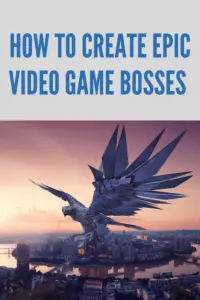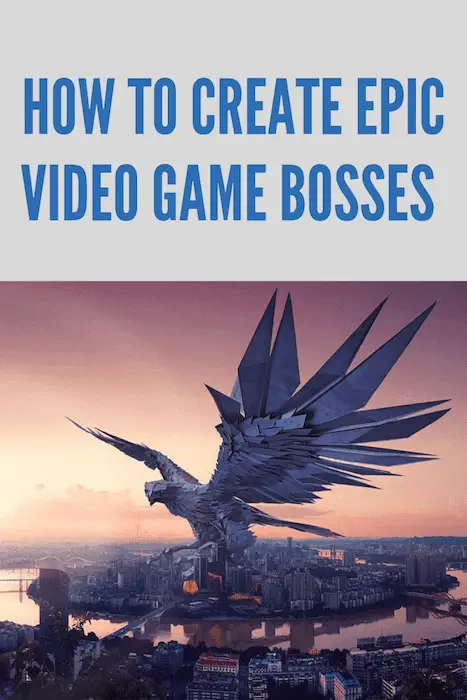Making a Video Game Boss
Making a great video game boss is both challenging and rewarding. It takes time, effort, and a lot of trial and error, but the end result can be incredibly satisfying for players. If you’ve never created a video game boss, or you’re looking to refine your methods, here are a few tips that will help.
How can you make a great video game boss? You can make them by:
-
- Balancing the Difficulty Level of the Boss.
- Giving the Boss a Unique Design and Skillset.
- Building Up the Player’s Anticipation of the Boss.
- Making Facing the Boss a Reward for Players.
- Placing Bosses at Strategic Moments in Your Game.
As a game designer, boss confrontations are your opportunity to really show what you’re capable of, so let’s take a look at each of the points above to help you improve your future boss designs.
Balancing the Difficulty Level of the Boss
Boss confrontations are an opportunity for players to demonstrate mastery of the skills that they’ve acquired in the events leading up to the confrontation. Here are the two main mistakes that video game designers make when balancing the difficulty level of a boss.
Making the Boss Too Difficult
When designing a boss, it can be tempting to make them incredibly powerful right from the beginning of your game, but this can be harmful to your players’ experience.
I’ve played games where I’ve had to face the same boss at least twenty times before I finally won. In these instances, winning didn’t feel like a reward as much as a relief.
While it’s possible I was missing something obvious, the job of a game designer is to equip and prepare players for the level of challenge that they’ll face in the boss confrontation so that they can win in no more than 5 or 6 tries at the most.
If you’re working on a game alone, it can be difficult to gauge the difficulty level of a confrontation because you’re deeply immersed in the project and have a clear understanding of exactly what you need to do in order to win.
Because of this, having a thorough player testing phase is vital because it will allow you to adjust the difficulty levels to make them suitable for your audience.
Making the Boss Too Easy
The other side of the coin is making your bosses too easy. The confrontation with a boss should feel like a challenge and up the stakes from confrontations that the player has previously experienced.
If players can defeat a boss in 30 seconds without much of a challenge, they won’t feel like they accomplished very much. But if the fight takes 5 minutes and requires intense focus and accuracy, they will feel a far greater sense of accomplishment that can be expanded upon by giving them another life, new ability, or unlocking an interesting new area for them to explore.
Giving the Boss a Unique Design and Skill Set
When it comes to making a video game boss, creativity is key. Boss fights are some of the most defining moments for a video game. Therefore, as you’re designing your boss fights, your goal should be to create an experience that people will remember and talk about long after they’ve upgraded to a new gaming console.
Two ways you can make your bosses memorable is by giving them a unique design and a unique skill set.
Unique Video Game Boss Design
The look and feel of a video game boss should be unique within the context of the game you’re creating. The boss should still feel like they’re apart of the universe that you’ve constructed, but at the same time, have a distinct appearance from the other characters in the game.
For example, if you’re creating a game set in a medieval fantasy world, a random boss fight with a futuristic robot wouldn’t feel natural or fit the context of your narrative. It would make more senses to have them face a uniquely designed troll with magical powers.
Unique Video Game Boss Skillsets
The skillset that a boss posses is just as important as their appearance. Their skillset needs to provide a greater challenge than what players have experienced so far in the game and require them to utilize the game mechanics they’ve been provided in unique ways.
Just like their appearance, their skillet should fit the context of the game. One way to ensure this is by examining the smaller foes that you’ve created and simply expanding them. If the small enemies in your game can throw small rocks, then maybe your boss can throw boulders the size of cars.
Another important aspect of skillsets for bosses is giving them more than just one because some players will quickly recognize the pattern required to defeat them.
In order to keep things interesting, you can give bosses multiple patterns that are trigged once their health has reached a certain level. I like it when bosses seem to become more desperate as the confrontation starts heading south for them.
Building Up the Player’s Anticipation of the Boss
Some of the work for creating a great video game boss begins long before the player even encounters the boss.
In the events leading up to facing a boss, your goal should be to heighten the player’s anticipation for the encounter. Here are two ways you can go about this:
Narrative Clues About the Boss
An easy way to create anticipation is by dropping subtle clues into the dialogue of your game. If every character your player encounters in a village expresses fear about a creature living in a nearby cave, your player will start to wonder about what’s in store for them and what they might need in order to prepare.
Increasing the Intensity of Confrontations
Another way you can heighten a player’s anticipation of a boss is by gradually increasing the intensity of the encounters that they face leading up to the confrontation. As the difficulty level increases, so will the player’s tension.
Environment Clues About the Boss
As a player journeys to the location of the big confrontation, you can use the environment to further increase their anticipation.
If they’re headed to face an ancient dragon, having a plethora of scorched trees and large stones with claw marks on them reinforce the idea that there is a powerful foe nearby.
Making Facing the Boss a Reward for Players
One of the great things about boss confrontations is that they break the normal flow of gameplay for a player. Even if the normal flow of a game is a lot of fun, players always find doing completely new things rewarding.
Here are a few ways you can make your boss confrontations as rewarding as possible for players:
Give the Boss a Distinct Theme Song
Hearing the same song a hundred times, no matter how good it is, starts to become annoying after a while. (I’m looking at you, Skyrim.) You can give your players an auditory reward by giving each of your bosses their own distinct theme song.
Place the Boss in a New Environment
New environments serve as visual rewards for players. If your game takes place primarily in a desert, then having your boss confrontation in an oasis with lush flora and fauna will be a pleasant change of pace.
Give Players a Reward for Defeating the Boss
After the confrontation is over, most players will expect a reward. Failing to give them an adequate prize can result in disappointment, so try to come up with something that they will find truly rewarding.
The most popular rewards are extra lives, new equipment or abilities, in-game currency, cutscenes that unveil more of the story, and new areas to explore.
Give Players a Break After Defeating the Boss
After the player has finally vanquished a boss, it’s good to reward them with a well-earned break. Giving your players a break will relieve the tension that you’ve been working to build, and allow them to enjoy what they’ve just accomplished.
Placing Bosses at Strategic Moments in Your Game
One of the keys to designing a great video game is getting the pacing right. If your game stretches on for too long with only mundane tasks and challenges then players can become bored. Boss fights should be strategically placed throughout the course of a game in order to keep players engaged.
However, you should also avoid having major bosses placed too close to one another. As mentioned in the previous section, one of the rewards for defeating a challenging boss is the break that players receive afterward. By placing bosses one after the other, players never have the chance to relax and regroup before diving into the next challenge.
Thank you for reading, and best of luck filling your games with incredible bosses! If you’d like to keep learning, you can check out more of my recent articles here.


